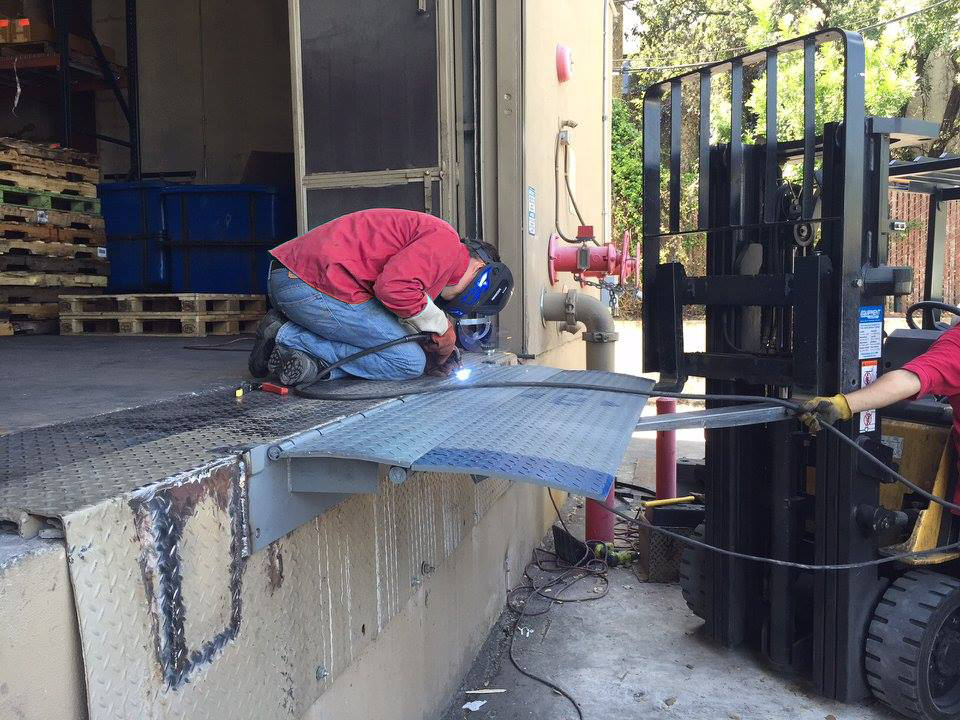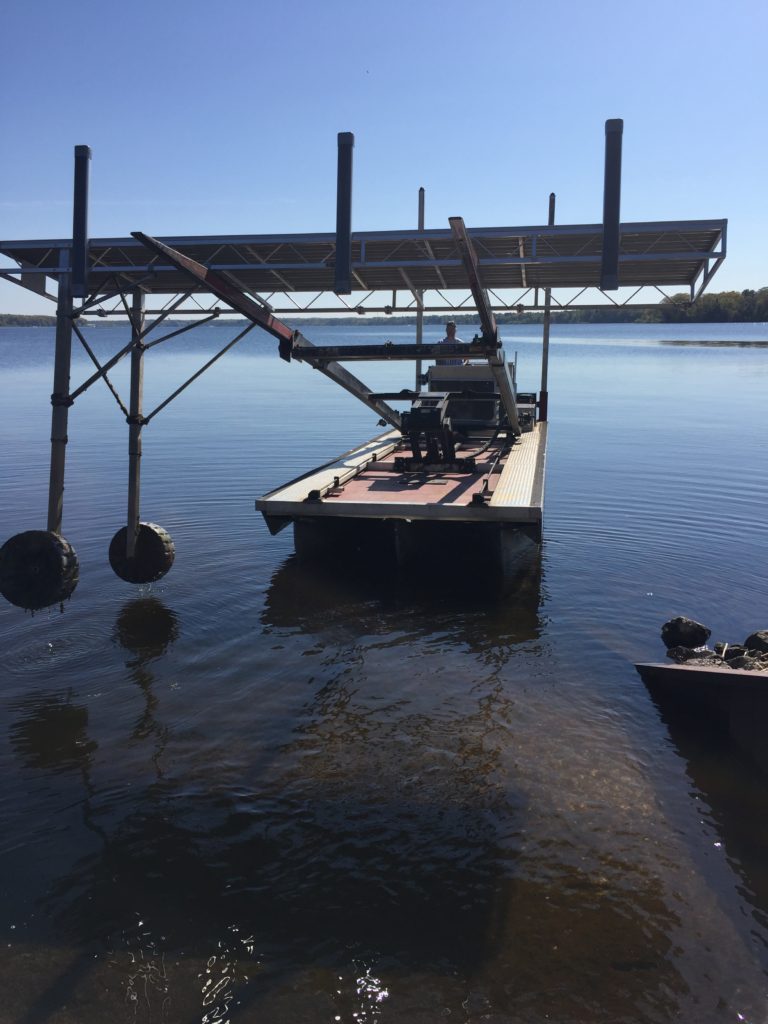Reliable Dock Repair Techniques: Ensuring Architectural Integrity
Ensuring the structural honesty of anchors with effective repair methods is vital for the durability and security of marine centers. This includes a multi-faceted strategy beginning with thorough assessments making use of sophisticated modern technologies like finder tools and from another location ran lorries (ROVs) to spot both noticeable and concealed problems. Subsequently, selecting the right repair service materials, such as corrosion-resistant alloys and composite materials, is essential for durability. Architectural reinforcement methods, including the application of cross-bracing systems and load-distribution plates, play an essential function in mitigating tension points. The relevance of these techniques becomes noticeable when checking out sophisticated repair service approaches and preventative upkeep approaches.
Examining Dock Damage
Examining dock damage is a crucial initial step in ensuring the architectural honesty and security of any kind of docking center. This first assessment includes a comprehensive examination to recognize both concealed and visible problems. Key facets to examine consist of the dock's foundation, pilings, outdoor decking, and hardware. Each element has to be looked at for signs of wear, rot, deterioration, or various other types of degradation that could jeopardize the structural stability.
Structural engineers or qualified examiners commonly execute these analyses making use of specialized devices and methods. As an example, underwater inspections could use finder devices or remotely ran lorries (ROVs) to identify immersed damage. Above water, aesthetic examinations are matched by utilizing moisture meters and other diagnostic devices to discover underlying concerns not immediately noticeable to the naked eye.

Choosing Repair Work Materials
Choosing the ideal fixing products is a pivotal action in the dock reconstruction process, one that directly influences the longevity and performance of the repaired structure. Material selection should be driven by aspects such as ecological conditions, load-bearing requirements, and compatibility with existing dock components. For example, wood is a standard option for anchors as a result of its all-natural strength and aesthetic appeal. Nevertheless, picking the appropriate sort of timber, such as pressure-treated lumber or naturally rot-resistant types like cedar or teak, is vital to stand up to aquatic environments.
In enhancement to timber, composite materials are significantly prominent due to their resilience and reduced upkeep requirements. Compounds, generally made from a blend of plastic and timber fibers, provide superb resistance to rot, bugs, and UV damages. For metal anchors, choosing corrosion-resistant alloys such as galvanized steel or marine-grade light weight aluminum is necessary to avoid rust and guarantee structural integrity in saline water problems.
Epoxy materials and marine-grade sealers are crucial for repairing splits and securing joints, offering a water-proof obstacle and enhancing the dock's general stamina. By diligently selecting premium products, dock repair work can accomplish durable outcomes, thus securing versus future destruction and ensuring safe, trustworthy usage.
Structural Reinforcement Methods
Reliable structural support strategies are crucial in guaranteeing the stability and durability of dock repairs. One basic approach entails the usage of steel or composite support bars (rebar) within concrete frameworks. Rebar gives added tensile toughness, protecting against splits and dispersing lots more evenly. This approach is specifically reliable for anchors revealed to heavy tons or severe environmental conditions.
An additional essential strategy is the application of fiber-reinforced polymers (FRP) These products provide high strength-to-weight proportions and outstanding this resistance to corrosion, making them ideal for enhancing wood or concrete anchors. FRP can be used in strips or sheets and adhered with epoxy resins to enhance structural stability.
Bracing and anchoring systems additionally play a critical function in structural support. Cross-bracing, using steel or wooden light beams, can counteract lateral pressures, reducing swaying and activity. Anchoring systems, such as helical piers or driven heaps, provide a secure foundation by moving loads to much deeper, more secure soil layers.
Finally, the integration of load-distribution plates can aid distribute weight a lot more evenly throughout the dock's surface, minimizing localized stress and anxiety points. These techniques jointly ensure that docks continue to be robust and risk-free, efficient in holding up against the rigors of their functional environment.
Advanced Fixing Methods

Another advanced technique entails undersea welding, which enables repairs to be conducted without the demand to dewater the area. This technique is particularly beneficial for attending to structural concerns in submerged dock elements, making sure marginal disruption to operations. Improved welding strategies, combined with robot systems, supply accuracy and integrity, therefore expanding the life expectancy of the dock.
Furthermore, cathodic security systems are executed to avoid rust in metal dock structures. By using sacrificial anodes or amazed current systems, these techniques content successfully mitigate the electrochemical procedures that bring about material wear and tear.
Finally, advanced monitoring technologies, such as structural health tracking (SHM) systems, provide real-time information on the condition of dock frameworks. These systems enable proactive maintenance and prompt treatments, eventually making sure the lasting architectural stability of the dock.
Upkeep and Avoidance
Upkeep and prevention are fundamental concepts that underpin the long life and safety and security of dock frameworks. Regular assessments are vital, enabling early detection of damage, potential weaknesses, and ecological impacts. A positive approach, including regular look for deterioration, rot, and architectural changes, reduces expensive fixings and extends the dock's operational life.
Preventative actions must consist of using protective finishes to steel parts to guard versus rust and using treated wood to resist decay. In addition, guaranteeing appropriate drain and air flow can protect against water accumulation, which is a common source of architectural destruction. Integrating high quality materials and adhering to producer guidelines during construction and repair work phases also play vital duties in enhancing longevity.

Training workers in dock upkeep finest methods makes sure constant application of preventative steps. Leveraging technological breakthroughs, such as drones for inspections and sensors for real-time tracking, can further enhance maintenance initiatives. By prioritizing upkeep and avoidance, dock proprietors can make sure architectural stability, functional security, and cost-effective management over the dock's lifespan.
Final Thought
To conclude, preserving the structural integrity of aquatic facilities demands detailed dock repair service strategies. Comprehensive examinations utilizing advanced tools reveal both visible and hid damages, while the option of appropriate repair service materials improves longevity. Carrying out structural reinforcement approaches addresses stress and anxiety points efficiently. Advanced fixing strategies, combined with routine upkeep techniques, guarantee the dock continues to be operational and secure under varied ecological problems. Embracing these strategies dramatically prolongs the life expectancy and capability of aquatic infrastructure.
Making sure the architectural integrity of docks with reliable repair work strategies is extremely important for the durability and safety of marine centers.Picking the ideal repair service products is a crucial action in the dock restoration process, one that directly affects the durability and performance of the repaired framework.Effective structural support techniques are important in ensuring the my explanation security and durability of dock fixings. By focusing on upkeep and prevention, dock proprietors can guarantee structural honesty, functional security, and economical administration over the dock's lifespan.
In final thought, maintaining the architectural integrity of marine centers demands comprehensive dock repair service methods.